London based art collector Maya Rasamny is the first female Chair of the International Circle at The Royal Academy of Arts and former Co-chair of the Tate Modern’s Middle East and North Africa Acquisitions Committee. Maya’s Contemporary Art collection highlights include a George Condo, Anthony Gormley, Cindy Sherman and Etel Adnan to name a few. Maya sits with Grazia’s Sarah Aziza to share her passion for life, art and beyond.
Photos by Maryam Eisler
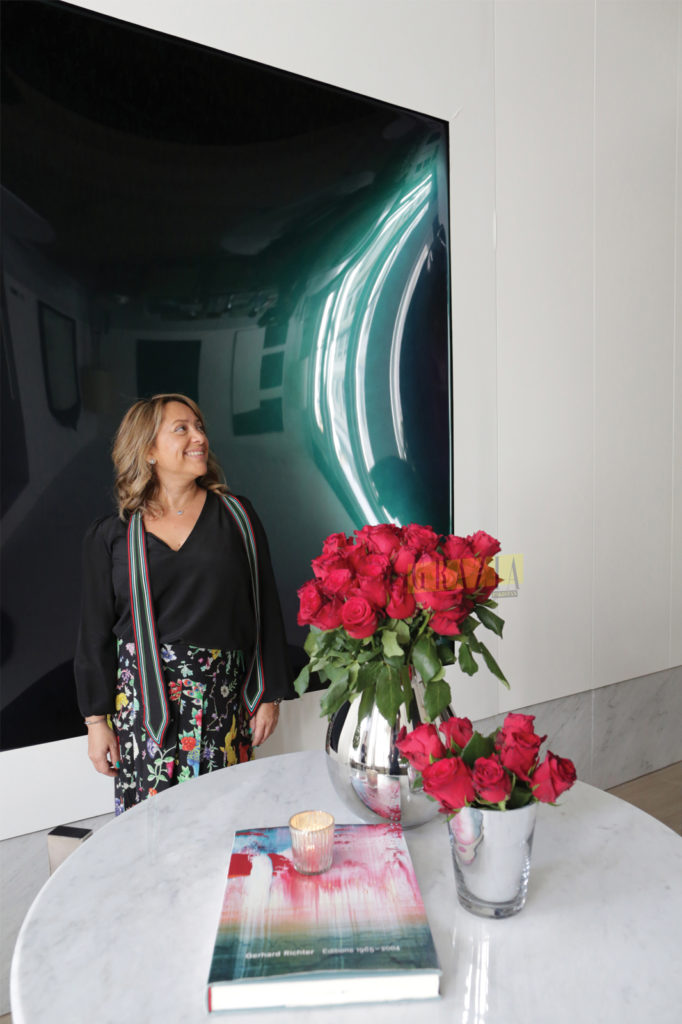
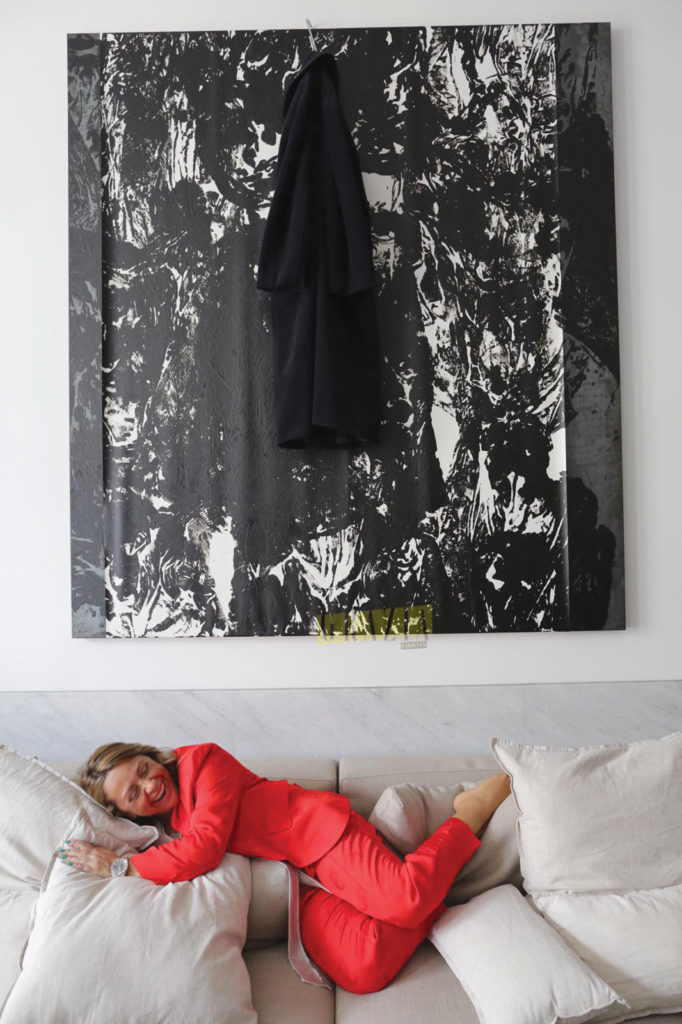
SA: How did your passion for art start?
MR: I started off by taking a course at Christie’s Education. I had seen a show by Damien Hirst called “Romance in the Age of Uncertainty” at the White Cube gallery. There was a series of cabinets that apparently represented the apostles and I didn’t fully understand it but it was a very powerful show visually that really touched me. The curiosity to know more made me take a yearlong course at Christie’s Education. I didn’t know much about art and how artists came to be in museums and galleries. I was only familiar with the likes of Monet and Manetetc, but not in much depth. Having grown up in London I had so much culture at my doorstep but I had never explored anything Modern or Contemporary in depth. After I took the course, what really came through was the fact that art is not only a beautiful painting on a wall, but it goes beyond the walls of a museum, it also has to do with social, political and economic issues, through artistic creativity it references so much of the world we live in. Artists are so avant-garde that they see and sense things in the heart much more. Their creativity is probably driven by a total heart mind coherence which makes it so much more powerful.
Coming from a political background, as my father was a political journalist, I was really drawn into this course. It is through that course that I noticed that Contemporary Art is a social phenomenon, a tool for communication and the most international language. Art to me has no boundaries. The artist can speak about subjects that matter to his heart through his artistic creativity.
Christie’s Education taught me the history of art and I learned how to research and more. When I was there they only covered Western art, and the artists that came from the Middle East like Shirin Neshat and Mona Hatoum were referred to as American or British artists instead of where they actually came from. After my course, my passion was ignited and I also wanted to understand about art beyond the borders of the West. When I was studying art beyond the Western artistic creativity I really started getting to learn about artists from my own culture. For someone who has been brought up largely outside of their culture, it connected me with my culture so much more and this adventure has been energizing and wonderful! Through the arts I got to know who I was and it’s been a heart-opening journey.
This when I was asked to be on the Board of Art Dubai and was a judge on the Abraaj Prize panel for the first three years. Through this, I started looking at art from the MENA region and realized that everyone was speaking the same language as the artists that I had studied.
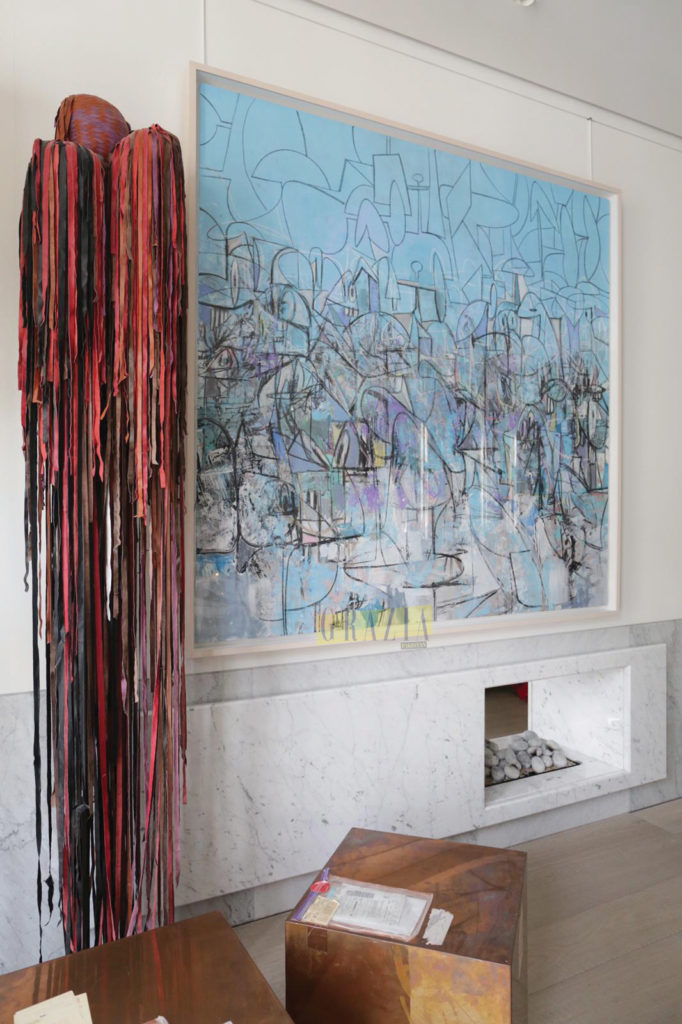
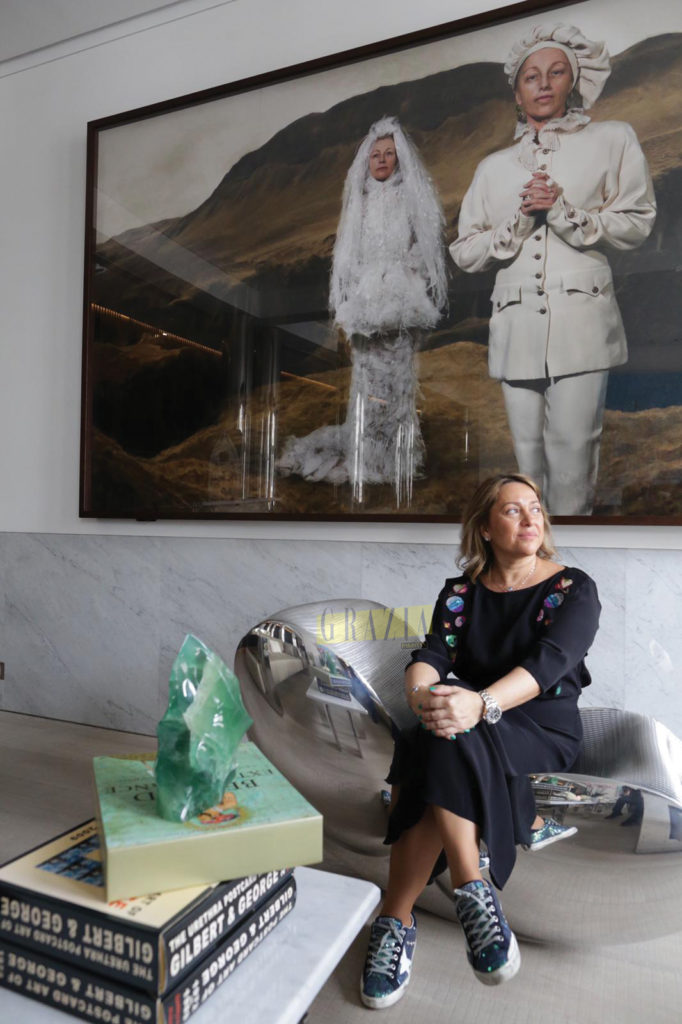
SA: Can you tell us a little bit more about how you got involved with the Tate Modern?
MR:I was a patron of the Tate and then put forward by a friend of mine to become co-chair when they started an Acquisitions Committee for the Middle East North Africa (MENAAC) region. So, they approached me and my friend Maryam Eisler. It was an incredible 10 years. Today as I look back, I am so grateful for this incredible journey. In my wildest dreams, I never thought I would become a collector so I look around and think ‘wow this is incredible’. Collecting also comes with major responsibility to the artists, the art and much more. I also never thought I would have these amazing conversations and meet the most diverse international group of people who have become dear friends. Whether they are curators, patrons, museum directors or artists, I simply enjoyed the journey. It has been an incredible, educational and fun adventure co-chairing MENAAC with Maryam. Today I feel grateful to have been part of this invigorating cultural adventure, to have gotten the support of a committee who wanted to engage in a cross-border dialogue under the intellectual leadership of the Tate curators and directors. I look back at fun memories, inspiring dialogues with artists, fun studio visits, educational seminars that brought artists, patrons and curators together. We enabled the purchase of 85 artworks to enter the Tate collection by 45 artists from the MENA region. It’s been a wonderful, heartwarming and educational ride. Art really transcends boundaries and is an international language. I can only be grateful for this experience!
SA: Now you sit on the board of the Royal Academy, how does that feel?
MR: I have so many passions and it doesn’t stop at art, it goes beyond the art world. I honestly wanted to take a step back when I stepped down from the Tate in October 2019. My friend who is Chair of the Board of Trustees at the RA (first woman in that position in 250 years) asked me if I would consider becoming the Chair of the International Circle of the Royal Academy. I had just joined as a patron the year before and she knew that I was very passionate about the arts. So, I took the challenge. Today we live in a world where many things are changing, including patronage. If I base patrons on myself I know that they are looking for new meaningful connections and conversations with the institutions they support in an innovative way.
I also have a deep fondness for the Royal Academy and for its incredible history…that it’s run by artists and that it has the longest established art school, where graduates continue to influence arts and culture beyond the UK and across the world! For me, art is an international language and one that crosses disciplines and goes beyond the walls of the museum. It crosses national boundaries, hence its importance in our world today. I have always enjoyed the great exhibitions at the RA, but their ongoing engagement with pressing issues and the cross-discipline conversations have drawn me in even closer. It feels really good to be working with them! I love being an ambassador of culture and creativity! I also believe that the conversations that happen inside a museum also need to transcend the walls of the institution. I am excited in this new role!
SA: What was the first piece you’ve ever bought and how has your collection evolved over time?
MR: The collection has evolved a lot. I think the first piece was a Ghada Amer. But now I have taken a step back, I don’t feel like buying as much anymore. For me it’s about the conversations, the engagement, it’s about art and bringing people together which I love. It’s about supporting institutions and bringing inspiration into the museum. It’s also about having conversations with artists discussing their inspirations and going beyond the old conventions of art.
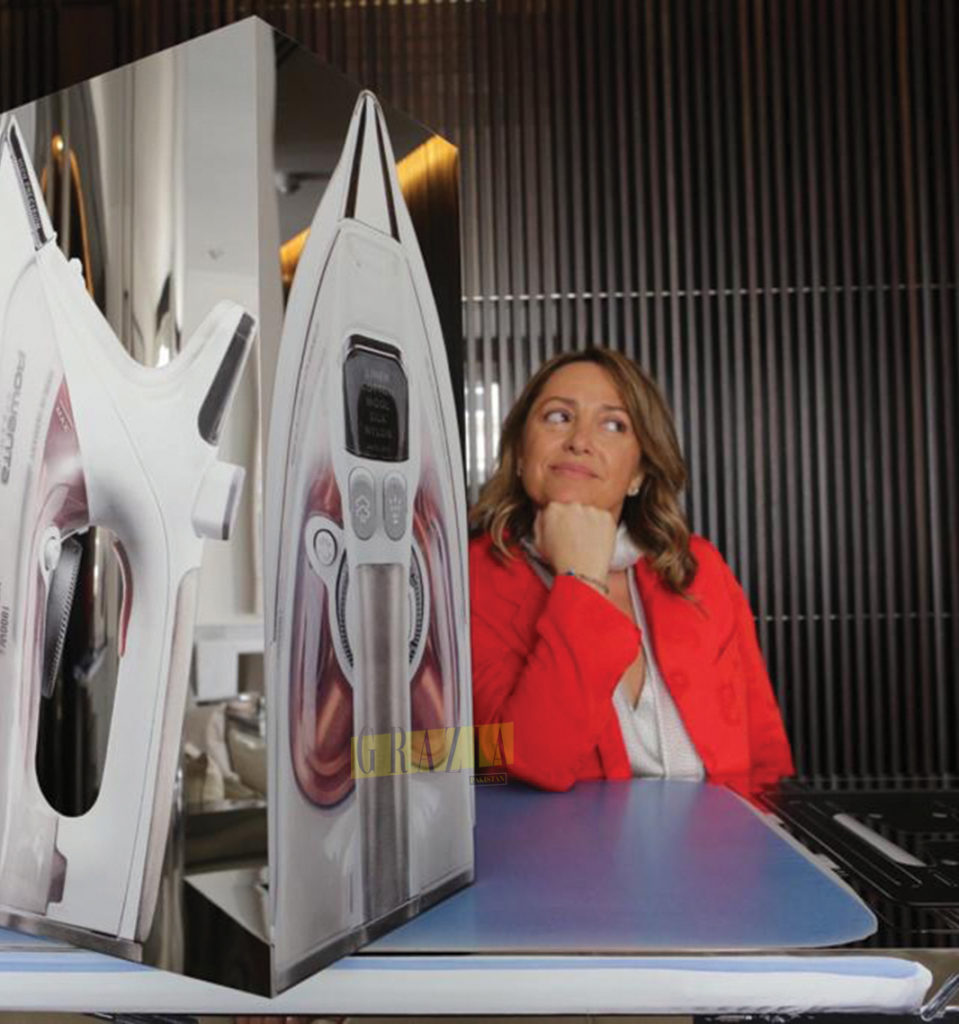
SA: Do you think that’s why you’re more drawn to Contemporary Art, because you are able to connect with the artists?
MR: It is the art of today. It talks about the world we live in and what is happening. It is a window to the future, the past and the now. It is intriguing and fun, I love it. I’m interested in where we are at this point of time. I believe that despite the chaos in the outside world, there is so much magic within. Being able to converse with artists that are alive is incredible, and most of the artwork in my collection was bought from artists who were alive at the time. You can still see the remnants of time within the collection even though it’s Contemporary Art and it keeps on changing.
SA: Do you have a favorite piece?
MR: I love all of them. Each one draws me in at different times and it depends on how I’m feeling at that moment. There are times where I’m drawn to the Anthony Gormely, Etel Adnan, Sarah Lucas, Cindy Sherman, or the George Condo. I love it all! Now when I look around, I sometimes miss some artworks which we have elsewhere. It’s like an ever-evolving treasure trove. It’s not about the ownership because you don’t own art. Art is about someone who has channeled their own creativity and it’s just divine.
SA: What is an upcoming art fair that you are looking forward to?
MR: I have to say I’ve become a little bored of art fairs. I love the conversations that take place and the art projects, especially at Frieze, and many others. I love seeing the people that come to the fairs, the conversations that take place between galleries and visitors and new artists on display. I like the Eye of the Collector and I look forward to it because it’s more than a typical art fair and it will cover art across centuries. Given the innovative times we live in, I am now looking forward to something new. I’m interested to see where all of this goes…are art fairs still going to be relevant or might there be something different? I want to be inspired!
SA: What advice would you give to someone who is just starting to collect?
MR: Open your heart and go with whatever it tells you. Be led intuitively and look out for the magic throughout. Marina Abromovic said ‘When someone says no, it’s only the beginning’. So, keep going and asking questions. Even if there are doors that close, keep the curiosity within you alive. Go to shows, ask questions and learn. The most important thing is not only to read but to go out and see. Always be engaged.
